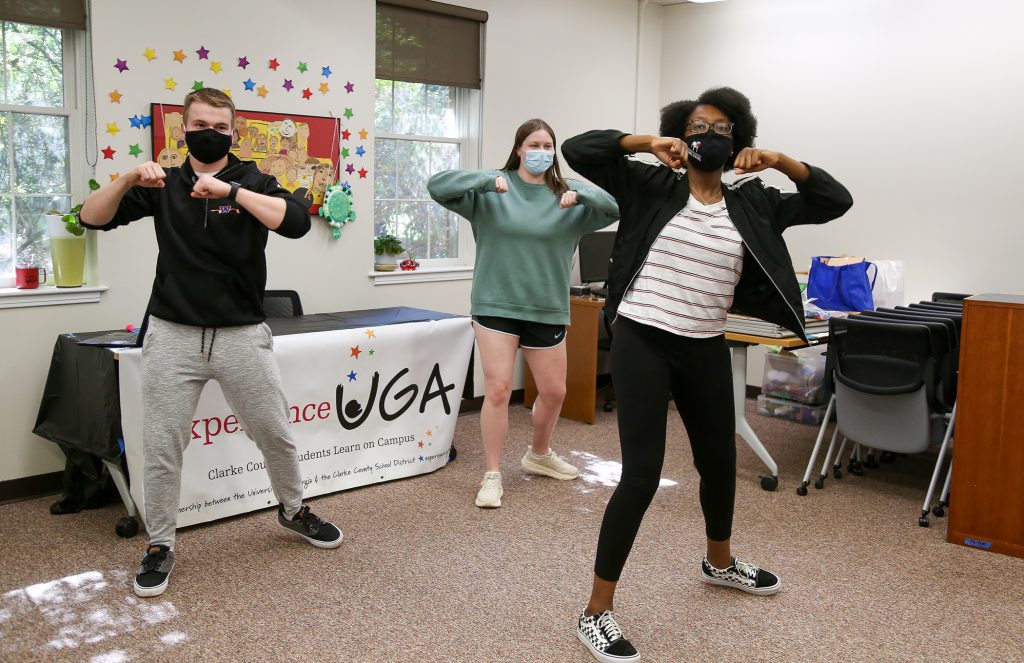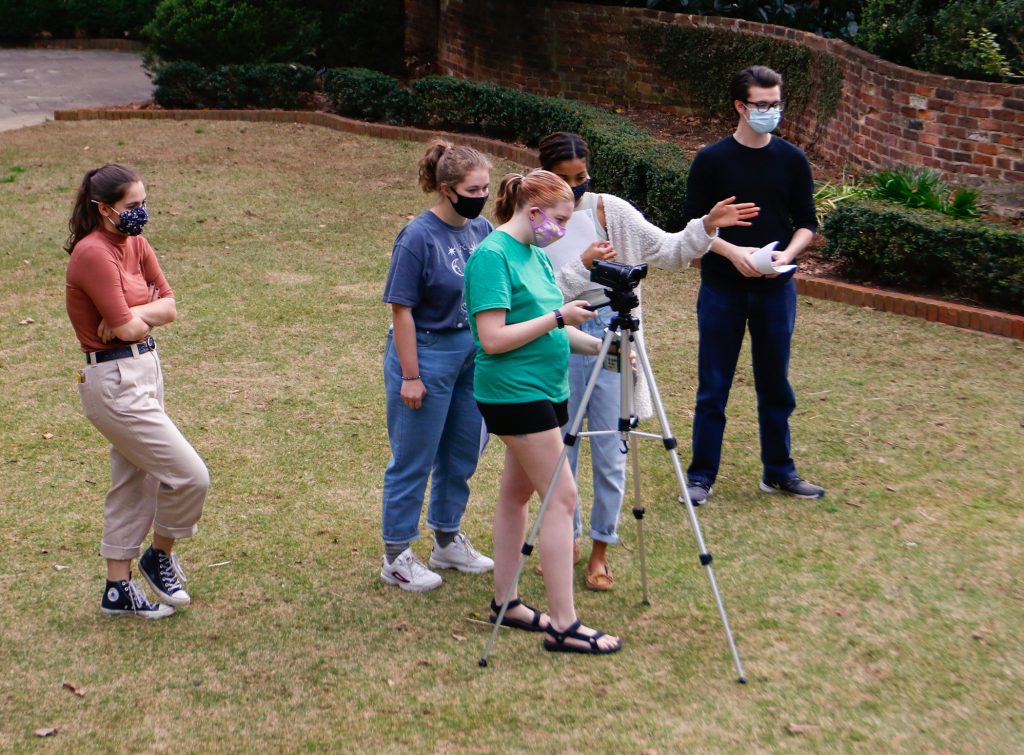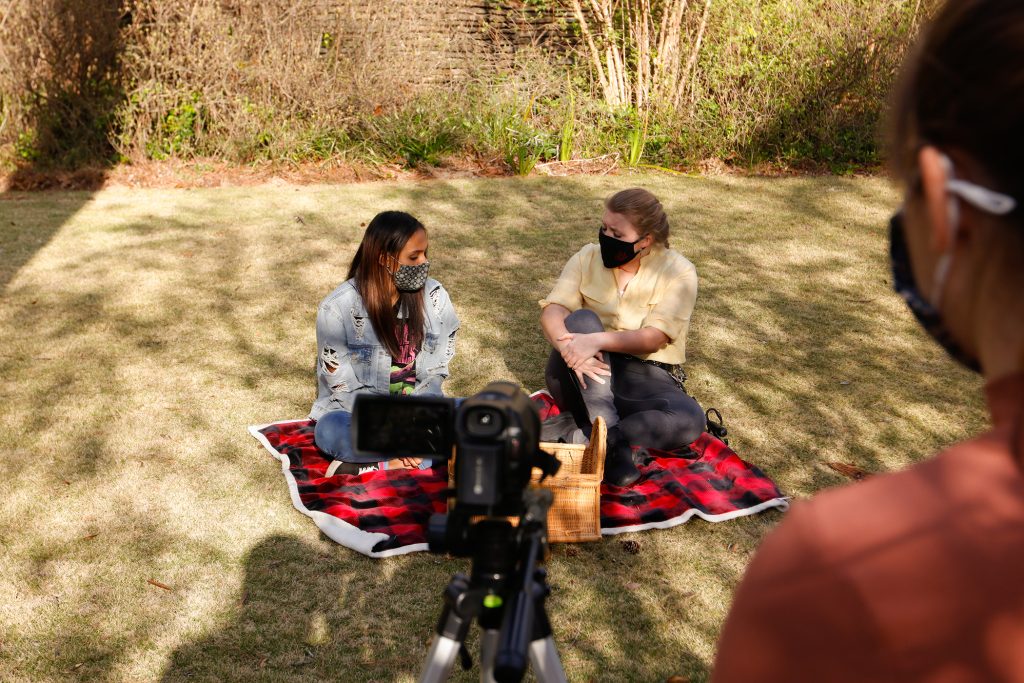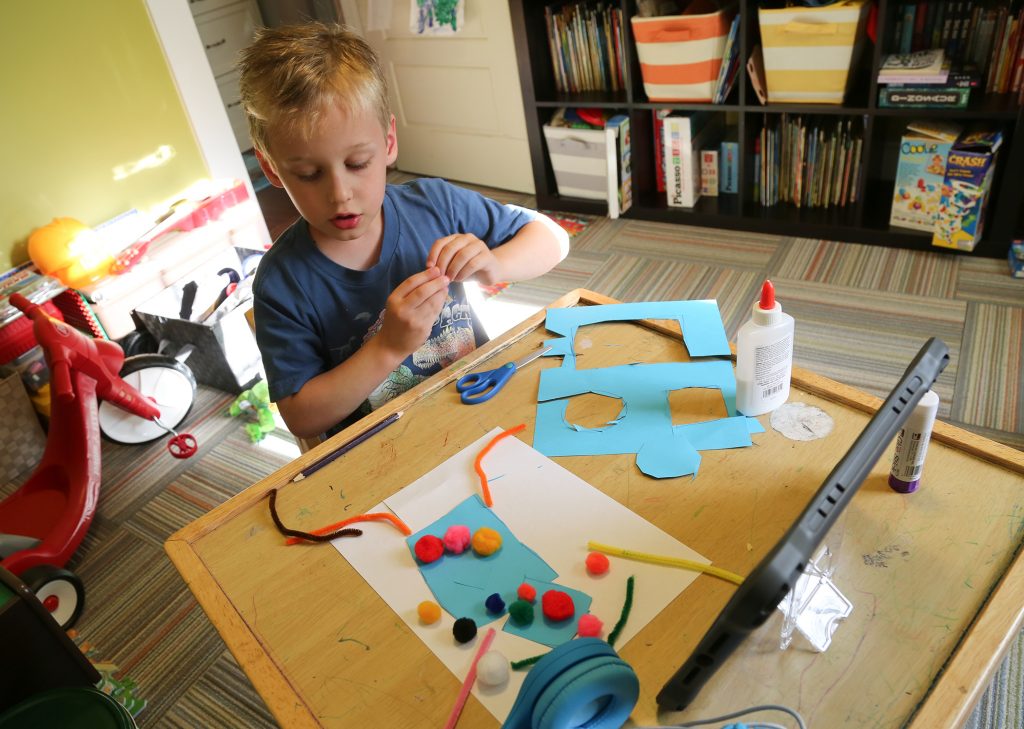The stage lights are shining and the curtain is in place, ready to be opened with the click of a computer mouse. Push play, and the story of “Adelaide and the Fairy World” comes to life on the computer screen.
Normally, the Children’s Theatre Troupe, a University of Georgia student-run organization, would be performing on the Fine Arts Theatre stage in front of hundreds of third-grade students from throughout Clarke County. This year the stage is in the Experience UGA Google classroom.
The third graders can watch the 32-minute play and view a Q&A with the cast and crew. There are theater warmup games and a puppet-making video also included on the Google page.
“It’s always been so cool to see the third graders’ excitement about theatre,” said Elise Harvin, the Children’s Theatre Troupe artistic director. “Shifting to virtual has been hard, but also really cool at the same time because it gave our organization the opportunity to grow as a whole. We had to think outside the box in order to bring our show and even theatre games to kids virtually.”

Experience UGA is a partnership between the University of Georgia Office of Service-Learning and the Clarke County School District that brings every student in a Clarke County public school—about 12,000 total in grades pre-K through 12—to the UGA campus for a field trip once a year. The goal is for the CCSD students to experience learning on a college campus, explore college options and interact with UGA students.
The program is led by the Office of Service-Learning, which reports to the UGA vice presidents for Public Service and Outreach and Instruction, and is facilitated by students and faculty that make up Experience UGA planning teams.
With in-person field trips canceled in 2020-21, teams had to find a way to provide a virtual experience that would be meaningful to students. They developed a Google classroom with Bitmoji characters (cartoon figures similar to emojis) of the UGA students to guide Clarke County teachers and students through the content. Links on the classroom page take viewers to activities created for each grade, pre-K through eighth. There were no virtual classrooms developed for the high school grades.

Pre-K students visit the State Botanical Garden of Georgia, where they learn about the senses. Students watch virtual puppet shows to learn about taste, touch, sight, smell and hearing.
Students in Mecca Romney’s pre-K class at Timothy Road Elementary School learned about the different sounds made by birds by watching a video of Caroline Parker, an education specialist at the State Botanical Garden, and Foreco, short for Forest Ecosystem, a puppet tree.
“We talked about the five senses, and how we use them to explore, to ask questions to further understand, and to communicate,” Romney said. “We practiced listening.”
Seventh-graders also virtually visited the State Botanical Garden and student-run UGArden to learn about plants and animals.
“For the seventh grade trip, we made several short follow-along at home videos,” said Audrey Stadler, the children’s program coordinator at the State Botanical Garden. “One activity was a plot study, focusing on observing how a plot of land changes over time.”
The plot study is an ecological succession, the order that organisms appear in an ecosystem over time. Each season, the students assess their plots and chart which insects or arthropods have appeared. They also chart the vegetation that has grown over time and take smudge samples of the soil to study how its color changed.
“So, ideally a class or a student at home could do that in their backyard or school yard,” Stadler said.

The virtual classrooms for each grade include a guide to the pages, links to different activities and information about the UGA students who created the virtual experience. As of early May, the virtual Experience UGA website had been viewed almost 5,000 times, which includes individual viewers as well as classrooms with 20 or more students.
Seventh grade students also could watch biological engineering student Erika Bowen extract DNA from strawberries. Using two measuring cups, isopropyl alcohol, plastic zip bags, plastic wrap, salt, dishwashing detergent, a metal strainer, a coffee filter and 10 strawberries, Bowen walked viewers through the simple process of mixing and straining ingredients to separate the DNA from the rest of the strawberries. Watch here: https://www.youtube.com/watch?v=ALB8Rg0PHsk
“This year we were excited about the opportunity to do things differently because it would allow us to showcase some types of engineering that we haven’t been able to before and even some small-scale experiments,” said Lauren Anglin, director of experiential learning and outreach for the College of Engineering.
Fifth graders learn about art through UGA’s Georgia Museum of Art and music through the Hugh Hodgson School of Music. Each student in fifth grade got a bag of art supplies from the museum so that they could do the online projects at home.
They felt so special getting the art supplies,” said Caroline Allums, a fifth grade teacher at H.B. Stroud Elementary School. “They felt like rock stars.”
“We really loved the experience.”

Experience UGA student ambassadors, who typically act as tour guides and volunteers, this year were tapped to create additional content for Google classroom, including welcome videos for each trip and additional activities for each grade.
“We have about 25 ambassadors this year and they all have their own little Bitmoji characters that appear throughout the site, like in the introduction video,” said Josh Podvin, assistant director for community partnerships in the Office of Service-Learning. “They’re making additional fun content like a time lapse of a bean growing or countless other things that they come up with and bring to the table to complement the trip content.”
The advantage to the virtual experiences is that they can be accessed any time and as many times as needed. The content will still be helpful when in-person field trips resume.
While Romney says she prefers the in-person field trips, she says she will continue to use the online content.
“It would be great to use them in tandem,” Romney said. “We could use it as a precursor to the campus trip.”
Explore the Experience UGA Google classroom here: http://experienceugavirtual.uga.edu


